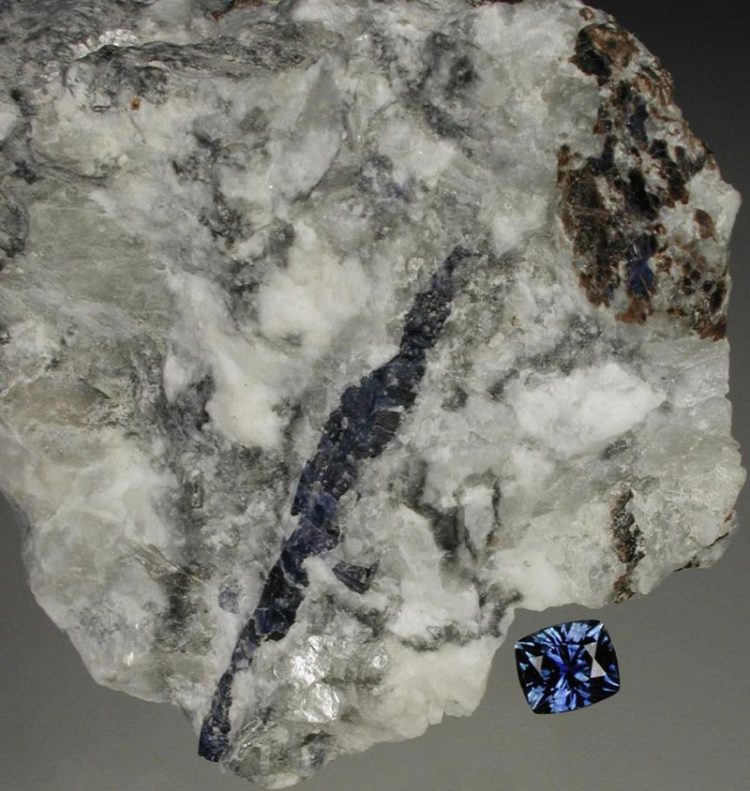UBC research unearths Canadian sapphires fit for a queen

This is a sapphire crystal, 3.6 cm, and gemstone from Kimmirut. Credit: B.S. Wilson
The so-called Beluga sapphires were discovered near Kimmirut, Baffin Island, Nunavut by brothers Nowdluk and Seemeega Aqpik in 2002. The location is Canada's only known deposit of sapphires. The gems form the basis of the ceremonial brooch given to the Queen last week by Canada's Governor General David Johnston.
“These occurrences are the first reported sapphires hosted in this type of marble-related deposit,” says Philippe Belley, a graduate student at the University of British Columbia. “We've discovered that it takes a fairly specific sequence of pressure and temperature events to create these gems. It's essentially a recipe.”
Belley, UBC mineralogist Lee Groat, and colleagues, outline the findings in the July issue of the Canadian Mineralogist, where they discovered the unique recipe of pressure and temperature events from Earth's history that were required to form sapphires in this area.
The researchers compared this information to regional data to pinpoint the most promising areas for sapphire exploration. Those areas are expected to occur near a fault that separates the Lake Harbour Group and Narsajuaq terranes. A terrane is a fault-bounded area or region with a distinctive stratigraphy, structure, and geological history.
“This research has enabled us to identify the areas of greatest potential for Kimmirut-type sapphire deposits in southern Baffin Island, which will facilitate gemstone exploration in this part of the Arctic,” says Groat, a UBC expert on gem deposits. “But it's also a deposit model that can be applied to exploration worldwide.”
Sapphires are usually cut and polished into gemstones for jewelry. The Beluga sapphires are typically a striking blue, but are sometimes yellow or colourless. The Queen's Sapphire Jubilee Snowflake Brooch consists of 48 Beluga sapphires, along with 400 diamonds from northern Canada, all set in Canadian white gold. Sapphires range in price from US$200 to $2,000 per carat.
Media Contact
All latest news from the category: Earth Sciences
Earth Sciences (also referred to as Geosciences), which deals with basic issues surrounding our planet, plays a vital role in the area of energy and raw materials supply.
Earth Sciences comprises subjects such as geology, geography, geological informatics, paleontology, mineralogy, petrography, crystallography, geophysics, geodesy, glaciology, cartography, photogrammetry, meteorology and seismology, early-warning systems, earthquake research and polar research.
Newest articles

A universal framework for spatial biology
SpatialData is a freely accessible tool to unify and integrate data from different omics technologies accounting for spatial information, which can provide holistic insights into health and disease. Biological processes…

How complex biological processes arise
A $20 million grant from the U.S. National Science Foundation (NSF) will support the establishment and operation of the National Synthesis Center for Emergence in the Molecular and Cellular Sciences (NCEMS) at…

Airborne single-photon lidar system achieves high-resolution 3D imaging
Compact, low-power system opens doors for photon-efficient drone and satellite-based environmental monitoring and mapping. Researchers have developed a compact and lightweight single-photon airborne lidar system that can acquire high-resolution 3D…





















